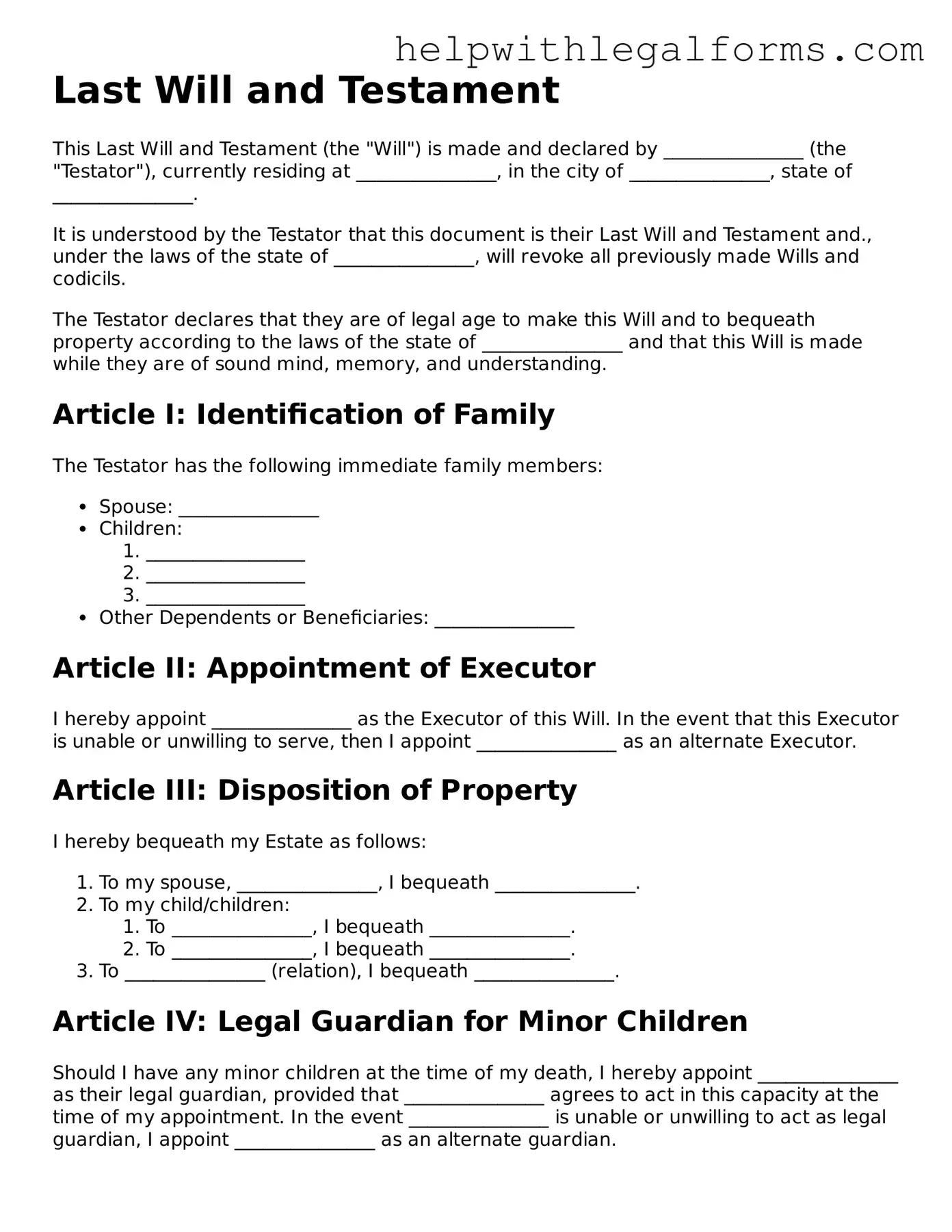Last Will and Testament
This Last Will and Testament (the "Will") is made and declared by _______________ (the "Testator"), currently residing at _______________, in the city of _______________, state of _______________.
It is understood by the Testator that this document is their Last Will and Testament and., under the laws of the state of _______________, will revoke all previously made Wills and codicils.
The Testator declares that they are of legal age to make this Will and to bequeath property according to the laws of the state of _______________ and that this Will is made while they are of sound mind, memory, and understanding.
Article I: Identification of Family
The Testator has the following immediate family members:
- Spouse: _______________
- Children:
- _________________
- _________________
- _________________
- Other Dependents or Beneficiaries: _______________
Article II: Appointment of Executor
I hereby appoint _______________ as the Executor of this Will. In the event that this Executor is unable or unwilling to serve, then I appoint _______________ as an alternate Executor.
Article III: Disposition of Property
I hereby bequeath my Estate as follows:
- To my spouse, _______________, I bequeath _______________.
- To my child/children:
- To _______________, I bequeath _______________.
- To _______________, I bequeath _______________.
- To _______________ (relation), I bequeath _______________.
Article IV: Legal Guardian for Minor Children
Should I have any minor children at the time of my death, I hereby appoint _______________ as their legal guardian, provided that _______________ agrees to act in this capacity at the time of my appointment. In the event _______________ is unable or unwilling to act as legal guardian, I appoint _______________ as an alternate guardian.
Article V: Debts and Taxes
It is my wish that all my just debts, funeral expenses, and expenses of last illness, be first paid from my estate, and thereafter, the specific bequests I have directed in this Will to be transferred or delivered, should be free of any tax or duty as a result of my death.
Article VI: General Provisions
All my property and assets, of any kind and wherever situated, not otherwise disposed of by this Will or in any other manner together with any property and assets over which I have a power of appointment at my death, shall be disposed of as follows:
- If I have not otherwise directed, to my then-surviving descendants, per stirpes.
- If I have no surviving descendants, then to my surviving parents, or the survivor of them.
- If I have no surviving descendants or parents, then in equal shares to my then-surviving siblings.
In witness whereof, I, _______________ (the Testator), hereby set my hand to this Will on this day of _______________, 20__.
Testator's Signature: _______________
Printed Name: _______________
Signed in the presence of:
- Witness #1
Name: _______________
Signature: _______________
Date: _______________
- Witness #2
Name: _______________
Signature: _______________
Date: _______________
